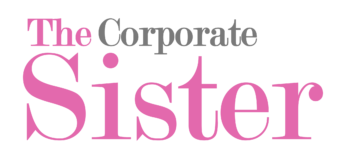
by Solange Lopes | Jul 29, 2016 | Career
 This is our weekly career and lifestyle news update, where we round up exciting news of the last week and we let you have it…ahem, news-wise that is…
This is our weekly career and lifestyle news update, where we round up exciting news of the last week and we let you have it…ahem, news-wise that is…
Think of it as your career gossiping section on steroids…
And while you’re at it, follow us on Facebook, Twitter,IG, and Pinterest!
Here we go…
Happy Friday!
To Your Success,
The Corporate Sis.
Like this:
Like Loading...

by Solange Lopes | Jul 25, 2016 | Working Mom & Woman Tips
 Mornings can be rough.
Mornings can be rough.
I’d know… I set up my alarm for 4am every night, only to play a game of catch-and-release with the snooze button until about 5am. At which point I engage in a tough back-and-forth with myself, discussing the pros and cons of leaving the sweet refuge of my blanket to face the harsh realities of this world. Then starts the mad dash to take a shower, get breakfast and lunch bags ready, before (gently) admonishing the small creatures of the house to roll out of bed and act like humans…
For women everywhere, the lapse of time between the moment we open our eyes to the time we finally walk out the door, looking somewhat human, without forgetting any little creature or dropping the other shoe, IS a journey in and of itself. And for most of us, how we start our day very often defines how we go through it (which also very often explains sugar binges and chocolate highs..)…
Yet, there are plenty of women out there who do this day in and day out, without (apparently) resorting to massive amounts of sugar or excessive online shopping (don’t judge me). From doing a bit of research and looking around, I’ve learnt one or two things from some of these successful and uber-productive women on hacking my morning routine (and cutting down on the sugar and online shopping):
Make Sleep and Exercise a Priority
Listen, if you don’t care for yourself, you can’t care for anyone else. Period. Running on empty batteries is running on no batteries. It took me a while to understand this, as my over-inflated, Superwoman ego was bent on doing it all, no matter what. Except your body can only do so much, and your mind may betray you the minute a German chocolate cake shows up…
In her latest book “Thrive: The Third Metric to Redefining Success and Creating a Life of Well-Being, Wisdom and Wonder“, Arianna Huffington talks about practicing daily rituals. When speaking to Soul Cycle, she explains how her daily ritual starts “the night before, with a good night’s sleep”.
Meanwhile, First Lady Michelle Obama gets up as early as 4:30 am to exercise. In this 2009 interview with Oprah, she puts it in unequivocal terms: “If I had to get up to take care of my kids, I’d get up to do that. But when it comes to yourself, then it’s suddenly, ‘Oh, I can’t get up at 4:30.’ So I had to change that. If I don’t exercise, I won’t feel good. I’ll get depressed.”
And is it any surprise that Vogue Editor-in-chief Anna Wintour starts her day at 5:45 am with a game of tennis?
Ok, time to dig out my sneakers…
Find Creative Ways to Spend Some Time With Family
Even more than money, time’s a commodity. Especially when it comes to spending time with family…
In the research for her “I Know How She Does It: How Successful Women Make The Most of Their Time” book, author Laura Vanderkam found out many busy families choose to have family breakfasts instead of dinners. All in all, they focused on how they could find ways throughout their days to create family memories.
For celebrities like J. Lo and Kim Kardashian, it means starting their busy day with their twins. For others, it may mean leaving early and saving dinner time for family time. Whatever works best…
“Good Enough” Is the New Perfect
The biggest morning hack of all is letting go of the need to be perfect. Whether it’s foregoing blow-drying your hair like designer Tory Burch, or getting an extra half-hour of sleep like Oprah (so you can do even more afterwards), understanding that what you can do is “good enough” is one giant step towards turning your mornings into success.
What are some of the morning hacks you use?
To Your Success,
The Corporate Sis.
Like this:
Like Loading...

by Solange Lopes | Jul 22, 2016 | Career
 This is our weekly career and lifestyle news update, where we round up exciting news of the last week and we let you have it…ahem, news-wise that is…
This is our weekly career and lifestyle news update, where we round up exciting news of the last week and we let you have it…ahem, news-wise that is…
Think of it as your career gossiping section on steroids…
And while you’re at it, follow us on Facebook, Twitter,IG, and Pinterest!
Here we go…
- In recent news, the Internet was buzzing with “plagiarism this” and “plagiarism that” after Melania Trump’s speech at the RNC convention. Let’s look at how it can affect your career;
- Finally taking that summer vacation? Ellevate Network confirms taking time off helps you thrive at work;
- Wanna double your salary? Read this…now!
- Uncomfortable networking event alert? Business Insider suggests 17 icebreakers to ahem…
break smash the networking ice;
- if you’re a note-taking freak like myself, you must check out Corporette’s busy woman’s guide to Evernote (my absolute fave) and other note-taking apps;
- No time to hit the gym? These 15 jobs can keep you in shape;
- Ever wondered what the difference is between sick days and personal days? The Muse tells you everything you need to know about personal days;
- So you made a bad career move? Here are 5 moves to help you recover;
- This linen jacket is your new summer go-to.
To Your Success,
The Corporate Sis.
Like this:
Like Loading...

by Solange Lopes | Jul 21, 2016 | Career
Unless you’re hiding under a rock, or are avoiding media at all costs (which no one will blame you for lately), you’ve heard about the now infamous speech Melania Trump gave at the Republican National Convention last week. As the Internet overflowed that day with side-by-side comparisons of current First Lady Michelle Obama’s 2008 speech and Mrs. Trump’s rendition, stronger and stronger allegations of plagiarism started to emerge.
Plagiarism is defined as the “the practice of taking someone else’s work or ideas and passing them off as one’s own.”As we’ve seen in the news recently, apart from the political noise it has created/amplified, the very concept of plagiarism raises serious ethical questions; as it also makes us wonder how to avoid the same type of scandal in our own lines of work and careers.
In the corporate world as well as in the business and political world, plagiarism can lead to disastrous consequence, including but not limited to lawsuits, financial repercussions, and destruction of careers and businesses. The thing is, you may not even know you’re plagiarizing as you’re doing it, which makes it even more concerning…and more dangerous.
As a blogger, I’ve had to research and look at the many facers of plagiarism in my work; which in turn has made me scrutinize how it can affect us all. Here are 3 easy ways you can avoid plagiarizing at work, without adding extra stress to your already busy life:
Think before cutting and pasting
It’s so easy to just “cut and paste” someone else’s work into your own. You may mentally want to revisit it later, and change it to accommodate your own style. And you may just forget to do so…
According to Harvard’s Guide of Using Sources, you should keep track of your sources in a separate file or folder. That makes it easier to acknowledge your sources later on. It could be as easy as maintaining a separate Word or Excel document listing your sources for each project you work on. What I also do is maintain my written work in Google Docs where I can link to any Internet-based sources.
At the end of the day, use whatever system works best for you to keep track of any sources you may use as part of your work. The bottom line is: never claim someone else’s work as your own!
Use citations and quotation marks
The Harvard’s Guide of Using Sources recommends using “quotation marks for directly quoted material, even for short phrases and key terms.” You can quote away, as long as you’re giving credit where credit is due.
In the same token, add citations every time you paraphrase or quote a source.
Plan Out Your Content
Preparing content at the last minute is the reason many people inadvertently commit plagiarism. With limited time and last-minute revisions, it’s easy to forget adding a source here, or inserting quotation marks there…
If your work requires research, make sure to budget enough time for it. It’s not just about finding the right information in a rush, but also keeping track of where you found that information in order to attribute credit later on…
When in doubt, attribute!
Not sure about the whole thing? Just do like my 4-year old and say it like it is! If you’ve borrowed some content from someone else, say it openly. It’s as straightforward as inserting a self-explanatory phrase like this one: “This paragraph has been extracted from…..”
There’s no right or wrong way to attribute work to its legitimate creator. Although we could be getting very technical here, the main point is to always disclose where your information is coming from (if it hasn’t originally been created by your truly).
Bonus: Use this Software to Check Your Work
Still in doubt? You can use the Turn It In software, also a favorite of many academic institutions and companies, to detect plagiarism.
Have you experienced plagiarism at work? How else do you avoid?
To Your Success,
The Corporate Sis.
Like this:
Like Loading...

by Solange Lopes | Jul 15, 2016 | Career
 This is our weekly career and lifestyle news update, where we round up exciting news of the last week and we let you have it…ahem, news-wise that is…
This is our weekly career and lifestyle news update, where we round up exciting news of the last week and we let you have it…ahem, news-wise that is…
Think of it as your career gossiping section on steroids…
And while you’re at it, follow us on Facebook, Twitter,IG, and Pinterest!
Here we go…
Happy Friday!
To Your Success,
The Corporate Sis.
Like this:
Like Loading...

 This is our weekly career and lifestyle news update, where we round up exciting news of the last week and we let you have it…ahem, news-wise that is…
This is our weekly career and lifestyle news update, where we round up exciting news of the last week and we let you have it…ahem, news-wise that is…

 Mornings can be rough.
Mornings can be rough.
 This is our weekly career and lifestyle news update, where we round up exciting news of the last week and we let you have it…ahem, news-wise that is…
This is our weekly career and lifestyle news update, where we round up exciting news of the last week and we let you have it…ahem, news-wise that is…







